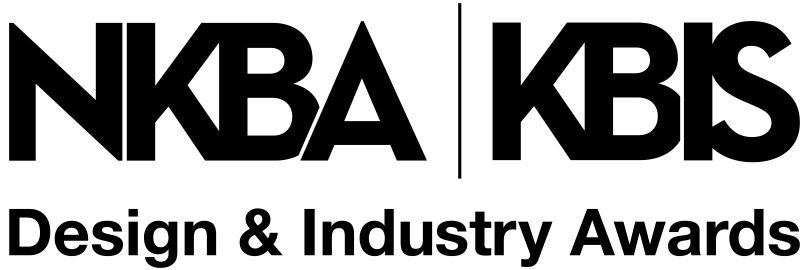Outdoor living design has entered a phase of refinement. When it exploded during the pandemic, the move was rooted in urgency; little thought was given to the mismatched chairs and take-out meals that constituted the al fresco experience. But now we’ve reached a point of stability that allows some reflection on the finer design points. Homeowners still want solutions that offer a year-round balance of comfort, durability, ease and style, but they are now looking for features that can be personalized to their lifestyle and their immediate environment.
In its 2024 U.S. Outdoor Trends Study, Houzz provides some telling perspectives on the shifting motivations of homeowners who are renovating their outdoor spaces. A significant majority (41%) are looking to repair or replace elements of existing areas, while only 6% are doing it for health and safety concerns.
The survey also sheds light on the objectives of these projects. The top three are to improve aesthetics (51%), enhance entertaining space (37%) and extend the home’s living space (33%).
Designers can leverage these market insights with their clients, and, when coupling them with product knowledge, are able to make a strong case for expanding their services beyond the interior.
Ambient Temperature and Light
Having a temperate outdoor living space goes a long way towards making it a pleasurable spot in which to spend time. Fans – ceiling models for covered spaces or freestanding for open ones – are the primary means of cooling an area and are available in a wide range of styles. Heating appliances offer a broader choice of technologies: fire pits and fireplaces can double as heat sources and design focal points, while propane-powered portable patio columns and surface-mounted electric lamps that utilize ceramic or quartz heating elements are highly effective but typically less pleasing to the eye.
Matt Bray of Portland, Ore.-based GBD Architects, makes a point about the blending of aesthetics and thermal comfort. “Providing outdoor heating that is seamless and well-integrated into the surrounding architecture or fused with other technologies – like lighting – greatly increases the flexibility of an outdoor space and quiets visual clutter that can detract from an otherwise well-designed area.”
According to the Houzz study, among homeowners with outdoor system projects, nearly four in five homeowners (78%) upgrade outdoor lighting. Landscape lighting tops the list (81%), followed by string or bistro lights (44%) and porch sconces (37%).
But there can be a tendency to over-illuminate, especially when the project lacks professional oversight. “People can go awry and just get too much light,” said Greenwich, Conn.-based landscape architect Janice Parker. “I try to get my clients to focus on what, where and how they want the lighting. Some people’s lights are so bright that it’s like they could do surgery outdoors. I don’t understand that. There has to be a balance.”
To find that balance, designers may find it helpful to utilize the resources of DarkSky International, an organization that focuses on protecting the quality of the nighttime environment. Its team of industry professionals – including lighting engineers and designers – work in collaboration with experts in the fields of wildlife biology, ecology and human health to create guidelines to ensure outdoor lighting minimizes light pollution while maintaining and improving functionality and safety. DarkSky maintains a searchable database of luminaires that are certified to reduce light pollution in residential applications.
Pesky Design Problems: Bugs & Weather
Backyard hardscapes that lack vegetation – like kitchen installations or pools – are especially problematic when it comes to conventional pest control methods. A design- and health-conscious solution seen during DCW directly addresses that issue. Thermacell LIV+ is a scent-free, people- and pet-friendly alternative to traditional sprays and misting systems. Designed to shield up to 3,000 square feet, a series of repellers – small cylinders that look like Bluetooth speakers – release a microdose of a lighter-than-air repellant (not an insecticide) that disrupts mosquitos’ sensors and drives them away from the protected zone.
While motorized screens are another deterrent to flying critters and mechanical louvers are great for providing shade and shelter from the elements, their control is usually manual. From Bond, the Breeze Pro is an environmental sensor that automatically opens or closes outdoor louvers, screens and shutters based on wind speed, rain or sunlight intensity measurements. App-based, it lets homeowners set the thresholds for activating the connected systems.
Clear Sightlines and Cozy Spaces
Rather than vast, open outdoor living areas, homeowners are embracing the charm of smaller, purposefully designed outdoor spaces that cater to specific activities like dining, socializing or unwinding. Level changes, pergolas and privacy screens are among the many ways designers are incorporating definition and architectural interest into outdoor spaces.
If a glass railing – or, for that matter, large windows or doors – is used in the project, make sure it’s made with bird-friendly glazing to minimize avian collisions. For designers concerned about this affecting the appearance of the installation, fear not; technology has rendered stick-on decals obsolete. Today, ultraviolet reflective patterns are applied to the glass panes or panels. These are invisible to the human eye, but birds can perceive them, enabling them to avoid flying into the glazing.
Outdoor Kitchens: Cabinets and Cooking
PBI Research reports that 55-60% of outdoor kitchens are now built using modular cabinetry. Daniel Germani, creative director of Danver Stainless Outdoor Kitchens and Brown Jordan Outdoor Kitchens, explains, “Whether it is a small patio home or a big expansive space, it’s important to design for functionality in any space rather than focusing on one size. With that, the demand for modular designs with flexible layouts and seamless appliance integration will continue to grow.”
While cabinet systems are embracing adaptability, the trend in outdoor appliances is focused on personalization. Specialized equipment, tailored to the interests and needs of homeowners, is replacing or supplementing the basic grill.
Designer Jon Call, founder of Mr. Call Designs in Palm Springs, Cal., cites an example of this. “Here, outdoor pizza ovens are really big because their high heat output doesn’t work well inside the home.”
Outdoor kitchens now include such function-focused appliances as flat-tops, kamados, smokers, rotisseries and wok stations.
The Houzz data quantifies this trend. Grills are the most common appliance or fixture in new outdoor kitchens (88%), followed by cooktops (46%), pizza ovens (33%) and smokers or deep fryers (22%).
Moving Forward
Celerie Kemble, a member of the NKBA Design Council, believes the most significant difference between interior and outdoor design is that the outdoors comes with movement and represents a different set of challenges.
“It is a place where activity dominates – and there is not really a sense of overbearing traditions outdoors,” Kemble says. “It is about creating comfort in a dynamic environment and anticipating relaxation. There is something wonderful about designing in the outdoors. There is no greater luxury.”
All photos in the gallery courtesy of the brand, unless otherwise noted.








